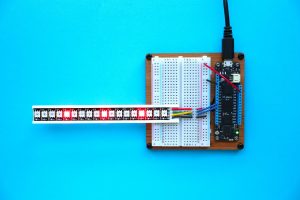Predictive Technologies in Vehicle Design
Welcome to the era of prediction and innovation in vehicle design. With the advancements in technology, the automotive industry has witnessed a significant shift towards predictive technologies. These technologies are revolutionizing vehicle design, ultimately leading to safer, more efficient, and smarter vehicles. From predictive maintenance to predictive modeling, these technologies are changing the game for automakers and their customers. In this article, we will explore the various predictive technologies in vehicle design and their impact on the industry.
The Rise of Predictive Technologies in Vehicle Design
Gone are the days of trial and error in vehicle design. Today, automakers have access to a wealth of data and advanced technologies that allow them to predict and simulate vehicle performance. This approach not only saves time and resources but also ensures that cars are designed to meet the highest standards of safety, functionality, and performance.
Predictive Maintenance
Maintaining a vehicle is a crucial aspect of vehicle ownership. With traditional methods, vehicle maintenance was primarily reactive, meaning repairs were only made when something went wrong. However, with predictive maintenance, automakers can identify potential issues before they happen, allowing for proactive maintenance. This not only saves time and money but also prevents breakdowns and improves the overall performance of the vehicle.
Predictive Modeling
Predictive modeling is the process of using mathematical and statistical techniques to make predictions about future outcomes. In the automotive industry, this technology is used to simulate different scenarios to predict how a vehicle will perform under various conditions. This allows for better design decisions, resulting in efficient and safer vehicles.
The Impact of Predictive Technologies on the Automotive Industry
Predictive technologies in vehicle design have had a profound impact on the automotive industry. Let’s take a look at some of the key benefits:
Enhanced Safety
Safety has always been a top priority for automakers, and predictive technologies have made it possible to design safer vehicles. By simulating and predicting potential hazards and issues, automakers can make necessary design changes to improve the safety of their vehicles. This has led to a significant decrease in accidents and fatalities on the road.
Improved Efficiency
Predictive technologies have also improved the efficiency of vehicle design. By accurately predicting the performance of the vehicle, automakers can make design changes that optimize fuel efficiency and reduce emissions. This not only benefits the environment but also saves consumers money on fuel costs.
Cost Savings
The use of predictive technologies in vehicle design has also resulted in cost savings for automakers. By identifying potential issues early on, automakers can avoid costly recalls and repairs, ultimately leading to a more profitable business.
Customer Satisfaction
With predictive technologies, automakers can design and produce vehicles that meet and exceed customer expectations. By predicting and simulating different scenarios, automakers can ensure that their vehicles perform at the highest standards, resulting in satisfied customers.
The Future of Predictive Technologies in Vehicle Design
The use of predictive technologies in vehicle design is only going to increase in the future. With the rise of electric and autonomous vehicles, automakers will rely on these technologies to design and produce these advanced vehicles. From predicting battery life to simulating self-driving capabilities, these technologies will play a crucial role in shaping the future of the automotive industry.
In conclusion, predictive technologies have become an integral part of vehicle design, and their impact on the automotive industry is undeniable. From improved safety to cost savings, these technologies have revolutionized the way vehicles are designed and produced. As technology continues to advance, we can expect to see even more innovation and predictions in the world of automotive design.








